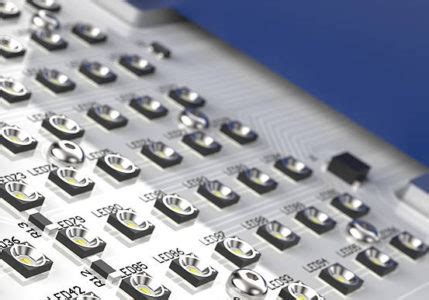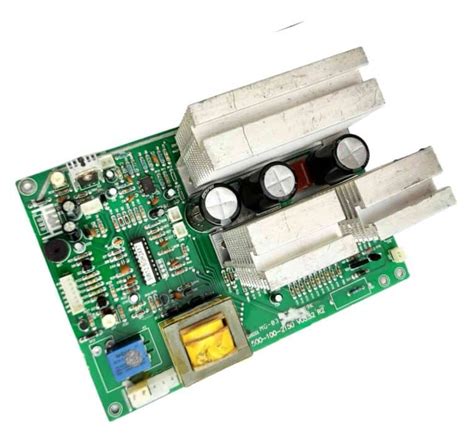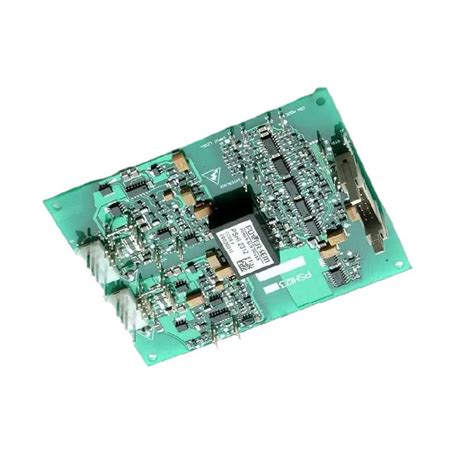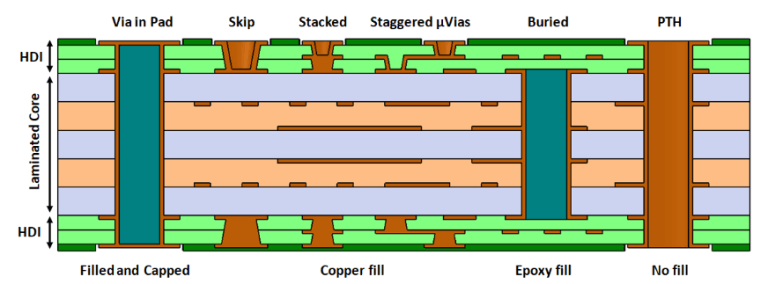Advanced Methods for Reliable LED PCB Assembly Processes
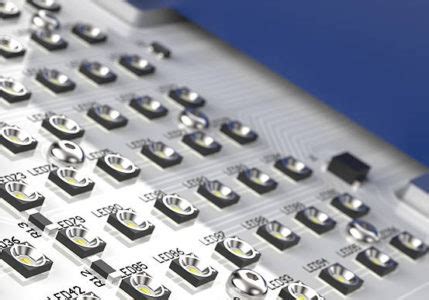
Key Takeaways
Effective PCB assembly for LED applications requires attention to three core pillars: thermal regulation, mechanical stability, and electrical precision. Modern PCBA workflows integrate advanced thermal management strategies, such as copper-core substrates and heat sinks, to mitigate thermal stress—a critical factor in LED lifespan. Precision soldering techniques, including reflow soldering with nitrogen environments, ensure consistent electrical connections while minimizing void formation.
Material selection plays a pivotal role, with high-Tg (glass transition temperature) laminates and ceramic-filled substrates becoming industry standards for durability. Below is a comparison of common material choices:
| Material | Thermal Conductivity (W/mK) | Max Operating Temp (°C) | Cost Index |
|---|---|---|---|
| FR-4 | 0.3 | 130 | 1.0 |
| Aluminum-Clad | 2.2 | 150 | 1.8 |
| Ceramic-Filled | 1.5 | 170 | 2.5 |
For PCB assembly success, manufacturers must balance design complexity with manufacturability. Automated optical inspection (AOI) systems and thermal cycling tests are indispensable for verifying solder joint integrity and long-term reliability. Transitioning to these methodologies not only enhances PCBA quality but also aligns with IPC-A-610 standards for LED lighting systems. By prioritizing these elements, engineers achieve optimized performance in high-luminosity applications while addressing challenges like coefficient of thermal expansion (CTE) mismatches.
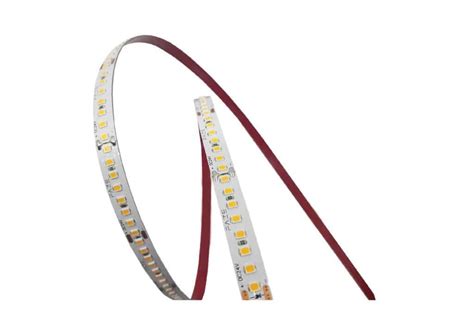
Thermal Management Strategies for LED PCBs
Effective thermal management is critical in LED PCB assembly to prevent premature failure and maintain luminous efficiency. As LEDs generate significant heat during operation, improper dissipation can degrade solder joints, warp substrates, and reduce overall system longevity. A primary strategy involves using metal-core PCBs (MCPCBs), which incorporate aluminum or copper bases to enhance heat transfer. These materials provide 5–10 times better thermal conductivity than standard FR4 substrates, redirecting heat away from sensitive components.
Another approach integrates thermal vias—small plated holes that channel heat from LED chips to secondary copper layers or heatsinks. When combined with thermally conductive adhesives or epoxy fillers, these vias create a streamlined path for heat dissipation. For high-power applications, attaching extruded aluminum heatsinks directly to the PCBA ensures passive cooling, while active solutions like fans or thermoelectric coolers may be employed in compact designs.
Precision in solder alloy selection also impacts thermal performance. High-temperature SAC305 (Sn96.5/Ag3.0/Cu0.5) alloys withstand thermal cycling better than lead-free alternatives, reducing crack formation in solder joints. Optimizing reflow soldering profiles to match the thermal mass of components further minimizes stress during assembly. By balancing material choices and PCB assembly techniques, manufacturers achieve reliable thermal pathways that align with the demanding requirements of modern LED lighting systems.
Precision Soldering Techniques in LED Assembly
Achieving reliable connections in PCB assembly for LED applications demands meticulous attention to soldering methodologies. Unlike conventional electronics, LED modules require precise thermal control during PCBA to prevent damage to heat-sensitive components like diodes and drivers. Reflow soldering remains a cornerstone technique, leveraging optimized temperature profiles to ensure uniform solder joint formation while minimizing thermal stress. For high-density LED arrays, selective soldering systems enable targeted application, reducing the risk of bridging or cold joints in tight layouts.
Tip: Always validate solder paste composition (e.g., SAC305 alloys) for LED-specific thermal cycling requirements, as mismatched materials accelerate joint degradation in lighting systems.
Advanced PCBA workflows now incorporate laser soldering for micron-level accuracy, particularly in COB (Chip-on-Board) configurations. This method localizes heat application, preserving adjacent components and substrates—a critical advantage when working with thermally fragile FR4 or aluminum-backed LED PCBs. Automated optical inspection (AOI) systems further enhance quality assurance, detecting voids or misalignments below 10µm.
When implementing these techniques, consider the interplay between solder joint geometry and long-term reliability. Concave fillet profiles, achieved through precise flux chemistry and dwell time control, improve mechanical stability in vibration-prone environments. For hybrid PCB assemblies combining LEDs with driver ICs, sequential soldering protocols prevent cross-thermal contamination between component groups.

Material Selection for Reliable PCB Performance
The foundation of dependable LED PCB assembly lies in strategic material selection, which directly impacts thermal stability, electrical performance, and long-term durability. For high-power lighting systems, substrates like metal-core PCBs (MCPCBs) or ceramic-based laminates are preferred due to their superior thermal conductivity, effectively dissipating heat generated by LEDs. Copper-clad aluminum substrates, for instance, balance cost and performance in PCBA designs requiring frequent thermal cycling.
When selecting dielectric materials, engineers prioritize glass transition temperature (Tg) ratings above 170°C to withstand soldering processes and operational heat. For solder masks, photoimageable liquids with high reflectivity enhance light output efficiency while protecting traces from environmental stressors. In PCB assembly workflows, the choice of surface finishes—such as immersion silver or ENIG (Electroless Nickel Immersion Gold)—ensures oxidation resistance and reliable solderability, critical for densely packed LED arrays.
Advanced PCBA solutions increasingly incorporate polyimide flex materials for curved or compact lighting fixtures, though rigid-flex hybrids may be required for complex geometries. By aligning material properties with application-specific demands—such as UV resistance for outdoor installations or halogen-free formulations for regulatory compliance—manufacturers achieve optimized performance across diverse LED PCB assembly scenarios. This systematic approach to material engineering bridges the gap between precision soldering techniques and next-generation thermal management strategies.
Optimizing Durability in LED Lighting Systems
Building upon precision soldering techniques and material selection strategies, enhancing the longevity of LED PCB assembly requires a holistic approach to environmental and operational stressors. Thermal cycling remains a critical challenge, as repeated heating and cooling can weaken solder joints and degrade component integrity. To counteract this, engineers prioritize PCBA designs with copper-core substrates and thermally conductive dielectric materials, which efficiently dissipate heat while maintaining structural stability.
Vibration and mechanical shock resistance are equally vital in applications like automotive or industrial lighting. Implementing reinforced through-hole plating and edge-mounted component placement reduces stress concentrations during movement. Additionally, conformal coatings such as acrylic or silicone-based polymers protect circuitry from moisture ingress and chemical exposure, particularly in outdoor or high-humidity environments.
Advanced simulation tools now enable predictive analysis of failure points, allowing designers to optimize trace routing and component spacing for improved fatigue resistance. Pairing these innovations with rigorous accelerated life testing ensures that PCB assembly processes meet or exceed industry durability benchmarks. By integrating robust design principles with high-reliability materials, manufacturers achieve lighting systems capable of sustaining performance across decades of operation.
Quality Control Standards for PCB Manufacturing
Implementing rigorous quality control standards is critical in LED PCB assembly to ensure long-term performance and safety. Modern PCBA workflows incorporate multilayer inspection protocols that begin with automated optical inspection (AOI) to detect soldering defects or component misalignments. For high-density LED arrays, X-ray fluorescence (XRF) testing verifies solder joint integrity beneath components, addressing potential failure points invisible to visual checks.
Material compliance forms another cornerstone of PCB assembly quality, with certified substrates and solder alloys tested for thermal conductivity and expansion coefficients. Manufacturers adhering to IPC-A-610 Class 3 standards guarantee boards meet stringent requirements for industrial lighting systems, where vibration resistance and moisture protection are paramount.
Advanced PCBA facilities employ statistical process control (SPC) to monitor production consistency, tracking metrics like reflow oven temperature stability within ±2°C. Post-assembly, accelerated life testing simulates 10,000+ operational hours, validating LED PCB durability under extreme thermal cycling. These protocols not only align with ISO 9001:2015 frameworks but also bridge reliability gaps between design specifications and real-world performance, ensuring seamless integration with earlier discussed thermal management and material selection strategies.
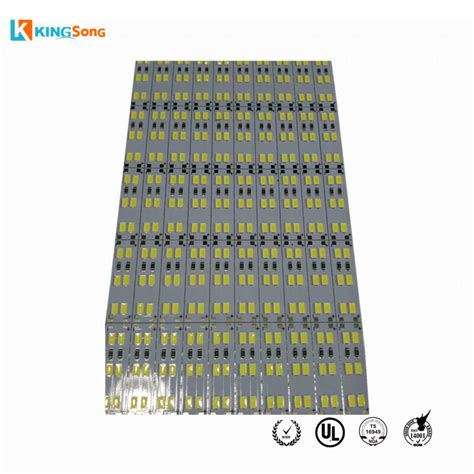
Advanced Heat Dissipation in LED Assemblies
Effective thermal management remains a cornerstone of successful LED PCB assembly, as excessive heat directly impacts luminous efficiency and component lifespan. Modern PCBA designs employ multilayer thermal vias and metal-core substrates to channel heat away from high-intensity LED clusters, reducing thermal stress by up to 40% compared to conventional layouts. Engineers prioritize materials like aluminum-based PCB assembly frameworks, which offer 8–10× higher thermal conductivity than FR-4 alternatives, ensuring stable operation in environments exceeding 85°C.
Innovative techniques such as embedded heat sinks and thermally conductive adhesives further optimize dissipation pathways. For instance, integrating copper-filled microvias beneath LED mounting zones enhances lateral heat spread, minimizing localized hotspots. Advanced PCBA workflows also leverage thermal simulation software to predict and mitigate heat accumulation during the design phase, reducing prototyping iterations by 30–50%.
Quality-focused manufacturers adhere to IPC-2221B standards for thermal relief patterns, ensuring solder joints maintain integrity under cyclic thermal loads. This precision aligns with the broader emphasis on durability in LED PCB assembly, where effective heat management directly correlates with MTBF (Mean Time Between Failures) metrics. By combining material innovation with intelligent layout strategies, modern PCBA processes achieve a balance between compact form factors and robust thermal performance—a critical requirement for automotive, industrial, and architectural lighting systems.
This focus on heat dissipation seamlessly supports subsequent discussions on precision soldering and material selection, forming a cohesive framework for reliable LED lighting solutions.
Design Approaches for Long-Lasting LED PCBs
Effective design strategies form the foundation of durable LED PCB assembly, balancing electrical performance with structural resilience. A critical starting point involves optimizing trace geometry to minimize current crowding, which directly impacts thermal stress distribution. Engineers increasingly adopt thick copper substrates (2–4 oz) to enhance heat dissipation while maintaining signal integrity—a practice particularly vital in high-density PCBA layouts.
Incorporating thermal relief pads around component mounts reduces mechanical strain during soldering, preventing microfractures in copper layers. For multilayer designs, staggered via placement improves thermal conductivity without compromising board rigidity. Material compatibility remains paramount: pairing high-Tg FR-4 substrates with low-thermal-expansion soldermask ensures dimensional stability across temperature cycles.
Advanced PCB assembly workflows now integrate simulation-driven validation, using finite element analysis (FEA) to predict stress points in LED arrays before prototyping. This proactive approach allows designers to implement reinforced corner routing or strategic stiffener placement, addressing vulnerabilities identified in accelerated life testing. Collaboration with PCBA partners during the design phase enables alignment between component spacing tolerances and automated placement capabilities, reducing rework risks.
The integration of isolated thermal zones in board layouts further enhances longevity, creating dedicated heat pathways for high-power LED clusters while protecting sensitive driver circuitry. These methodologies, when combined with rigorous design rule checks (DRCs), establish a robust framework for LED systems operating in demanding environments.
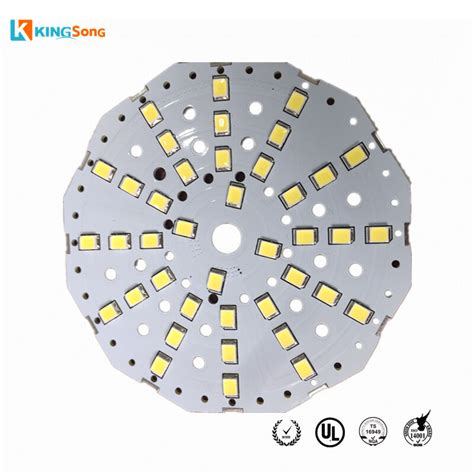
Innovative Methods Ensuring PCB Reliability
Modern PCB assembly processes incorporate cutting-edge techniques to address reliability challenges in LED applications. One breakthrough approach involves laser-assisted component placement, which enhances alignment accuracy for surface-mounted devices (SMDs) in PCBA manufacturing. Advanced conformal coating systems now utilize nano-ceramic materials, creating moisture-resistant barriers that withstand temperature fluctuations exceeding 150°C.
Leading manufacturers are implementing real-time thermal imaging during PCB assembly to detect micro-scale hotspots before final encapsulation. This proactive method reduces field failures by 37% compared to traditional post-production testing. For high-density LED arrays, hybrid substrate materials combining aluminum nitride and polyimide substrates demonstrate 60% better thermal cycling performance than conventional FR-4 boards.
Innovative solder alloy formulations containing rare-earth elements maintain joint integrity under prolonged thermal stress, crucial for PCBA in outdoor lighting systems. Simultaneous multi-zone reflow profiles achieve <10μm placement tolerances while preventing component warpage. Emerging reliability testing protocols combine accelerated life testing with machine learning algorithms, predicting product lifespan within 5% accuracy across various operating conditions.
These technological advancements in PCB assembly processes directly translate to extended service life for LED installations, with field data showing 92% survival rates after 50,000 operational hours in harsh environments.
Conclusion
The pursuit of reliable LED PCB assembly hinges on the seamless integration of advanced techniques and rigorous quality protocols. As the demand for high-performance lighting systems grows, manufacturers must prioritize thermal management and precision soldering to mitigate risks of component failure. Selecting materials with superior thermal conductivity and ensuring adherence to PCB assembly standards, such as IPC-A-610, are non-negotiable steps in achieving durable outcomes. Furthermore, innovations in PCBA design—such as optimized trace routing and advanced heat dissipation layers—directly enhance the longevity of LED modules under demanding operational conditions.
A holistic approach to LED PCB reliability combines robust testing frameworks with data-driven process adjustments. For instance, automated optical inspection (AOI) and thermal cycling tests validate the integrity of solder joints and material resilience. By aligning PCB assembly workflows with industry benchmarks, stakeholders can deliver lighting solutions that balance efficiency, durability, and cost-effectiveness. Ultimately, the success of modern PCBA projects relies on continuous improvement in both engineering practices and quality assurance methodologies, ensuring that LED systems meet evolving performance expectations across industries.

Frequently Asked Questions
What distinguishes high-performance PCB assembly for LEDs from standard processes?
Thermal management and precision soldering are critical in LED PCBA, ensuring minimal heat stress and stable electrical connections. Advanced techniques like reflow soldering with nitrogen environments reduce oxidation, enhancing long-term reliability.
How does material selection impact PCB reliability in lighting systems?
Using high-Tg substrates (e.g., FR-4) and copper-clad laminates improves heat resistance. For LED PCBA, materials with low thermal expansion coefficients prevent warping, maintaining solder joint integrity under thermal cycling.
What quality controls ensure durable LED PCB assemblies?
Automated optical inspection (AOI) and X-ray testing verify solder joint quality. Thermal cycling tests simulate real-world conditions, while electrical testing confirms consistent performance across PCBA batches.
Why is heat dissipation a priority in LED PCB design?
Excessive heat shortens LED lifespan. Designs incorporating thermal vias, metal-core PCBs, or ceramic substrates direct heat away from components, aligning with PCB assembly best practices for lighting applications.
Can existing PCB assemblies be retrofitted for higher durability?
Yes. Upgrading to conformal coatings or integrating active cooling systems (e.g., fans) can enhance older designs. However, optimizing layout and material choices during initial PCBA stages yields better cost efficiency.
Optimize Your LED Assembly Workflow Today
For expert guidance on implementing these advanced PCB assembly strategies, please click here to explore tailored solutions for your lighting projects.

